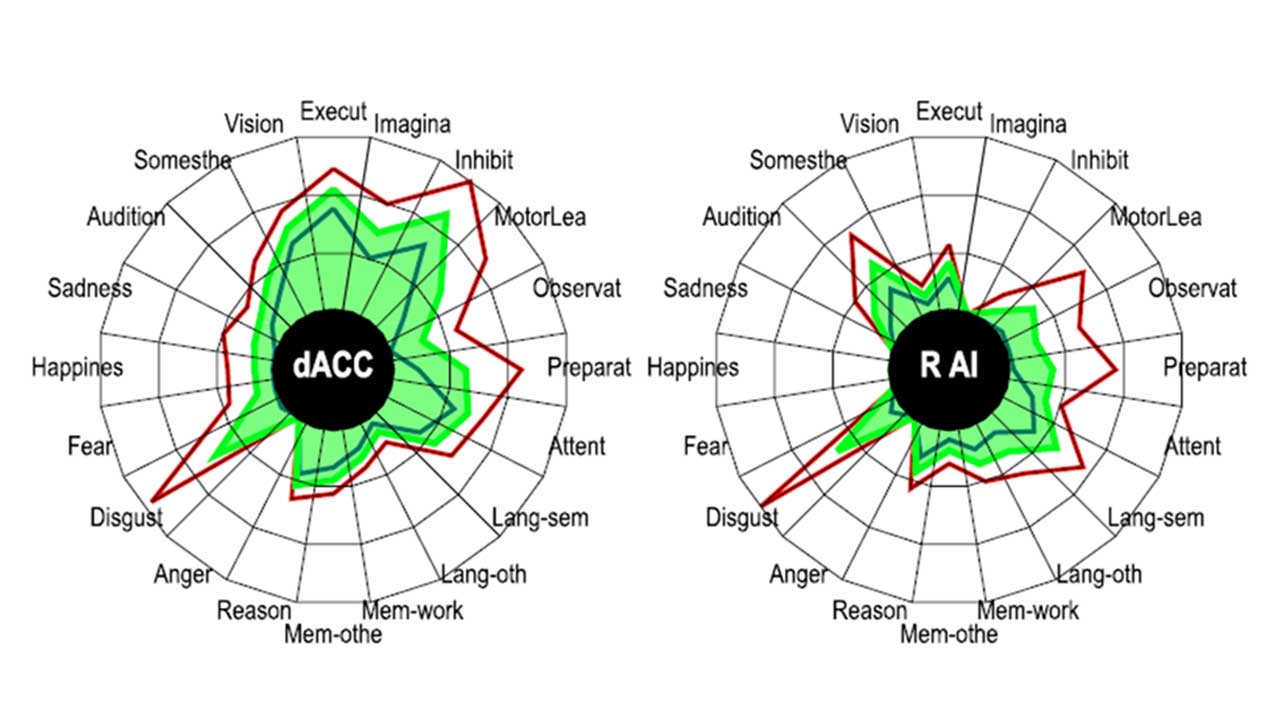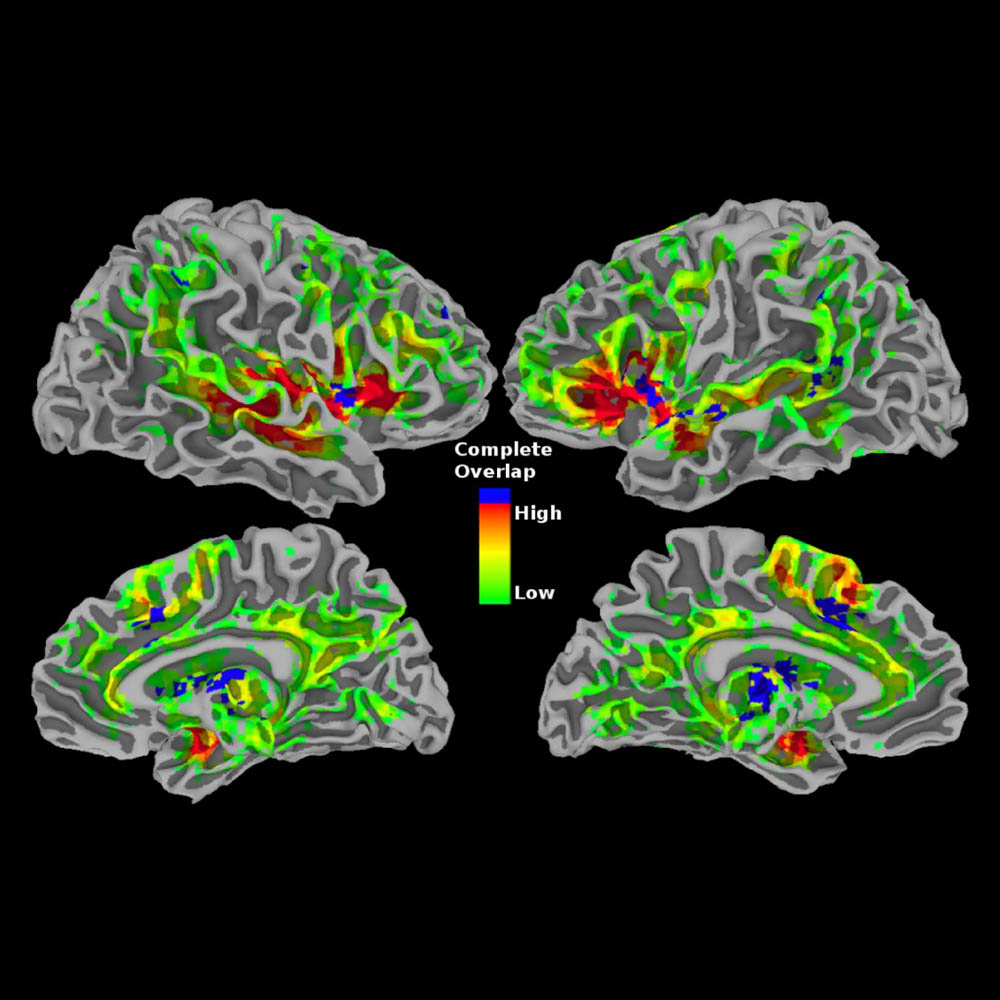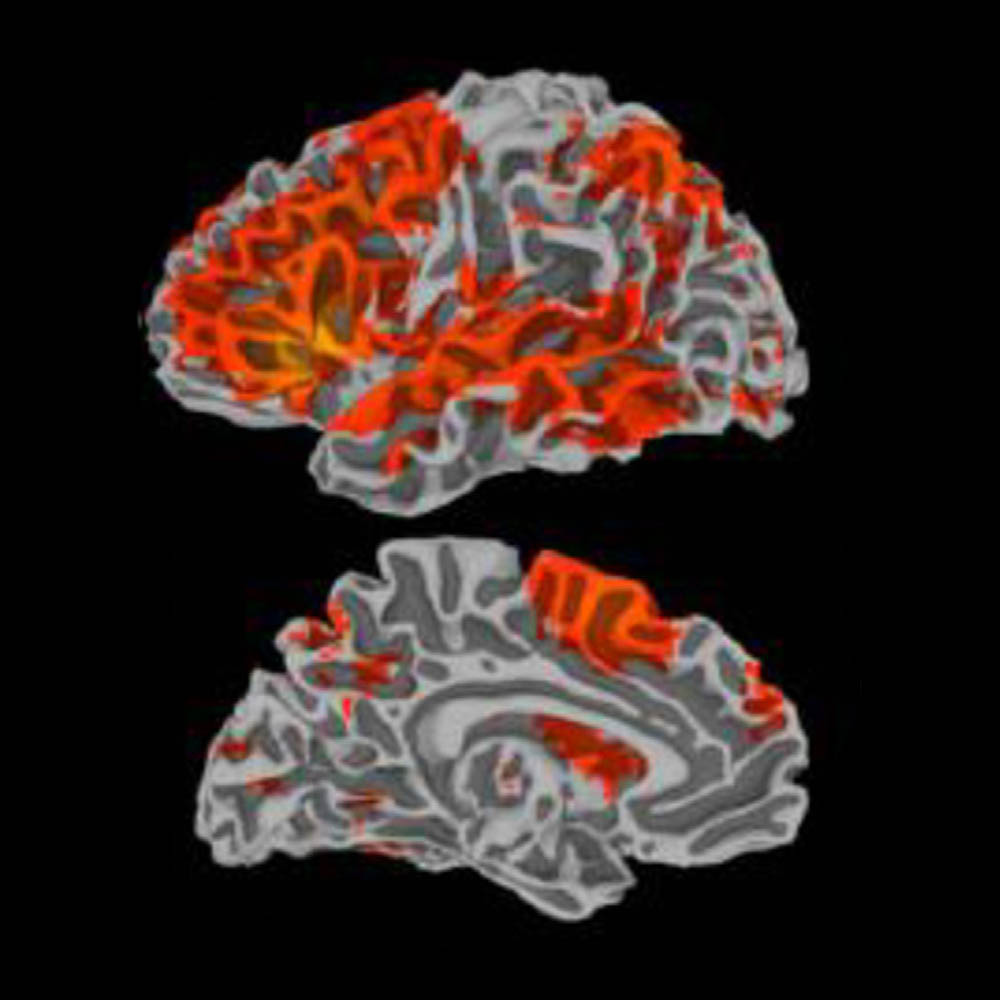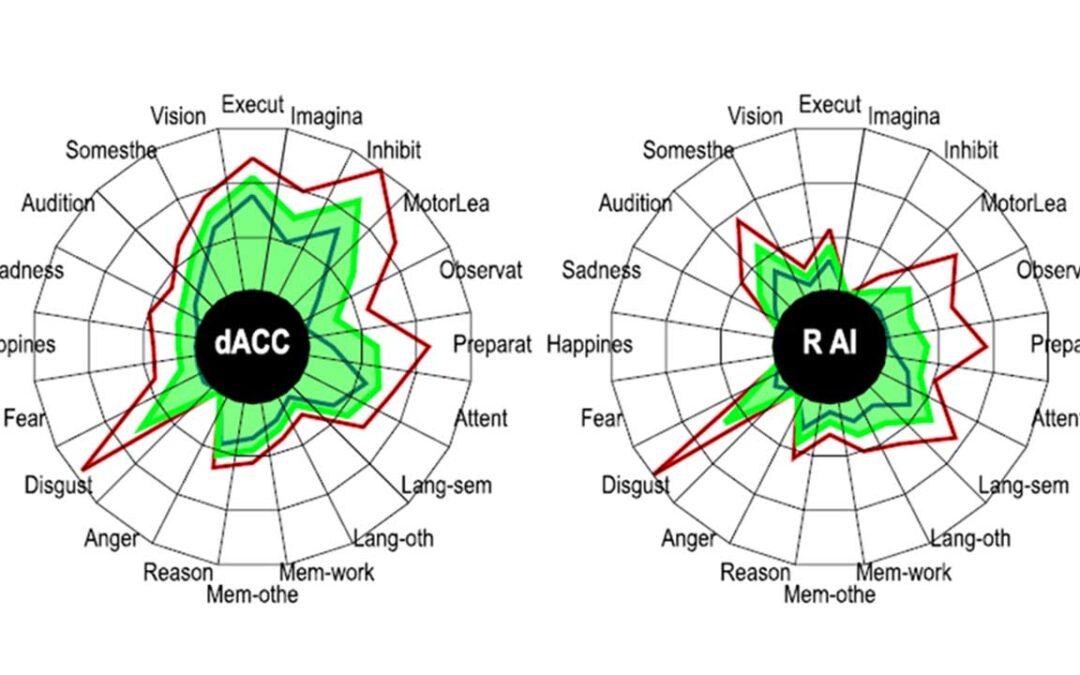Describing functional diversity of brain regions and brain networks.
Michael L. Anderson, Josh Kinnison, and Luiz Pessoa. NeuroImage. 2013 June; 73:50-8.

Abstract
In the current functional MRI study, we investigated interactions between reward and threat processing. Visual cues at the start of each trial informed participants about the chance of winning monetary reward and/or receiving a mild aversive shock. We tested two competing hypothesis: according to the salience hypothesis, in the condition involving both reward and threat, enhanced activation would be observed because of increased salience; according to the competition hypothesis, the processing of reward and threat would trade-off against each other, leading to reduced activation. Analysis of skin conductance data during a delay phase revealed an interaction between reward and threat processing, such that the effect of reward was reduced during threat and the effect of threat was reduced during reward. Analysis of imaging data during the same task phase revealed interactions between reward and threat processing in several regions, including the midbrain/ventral tegmental area, caudate, putamen, bed nucleus of the stria terminalis, anterior insula, middle frontal gyrus and dorsal anterior cingulate cortex. Taken together, our findings reveal conditions during which reward and threat trade-off against each other across multiple sites. Such interactions are suggestive of competitive processes and may reflect the organization of opponent systems in the brain.
Related Papers

Beyond the Tripartite Cognition–Emotion–Interoception Model of the Human Insular Cortex


